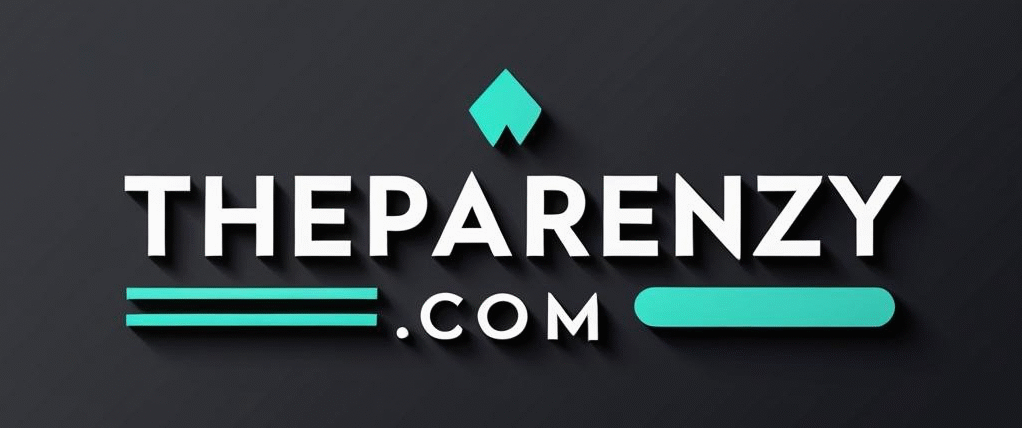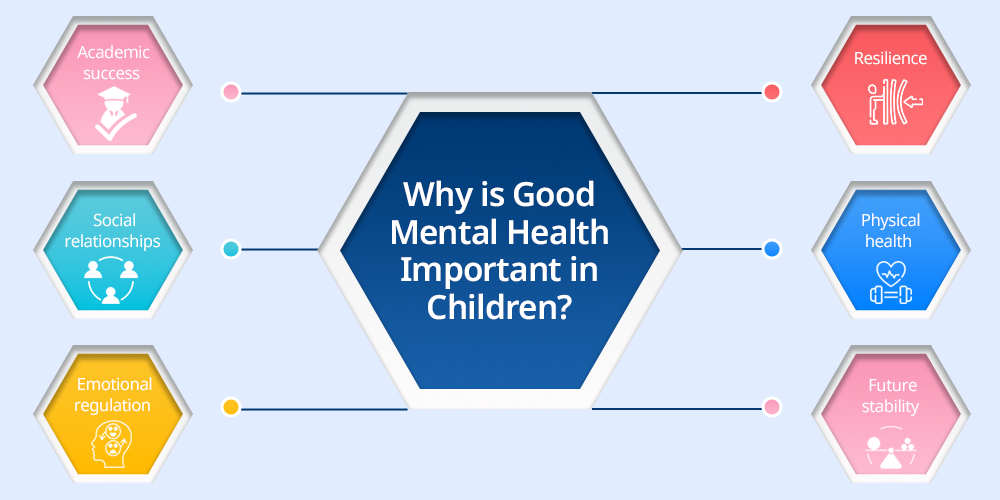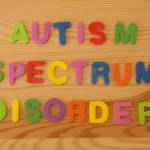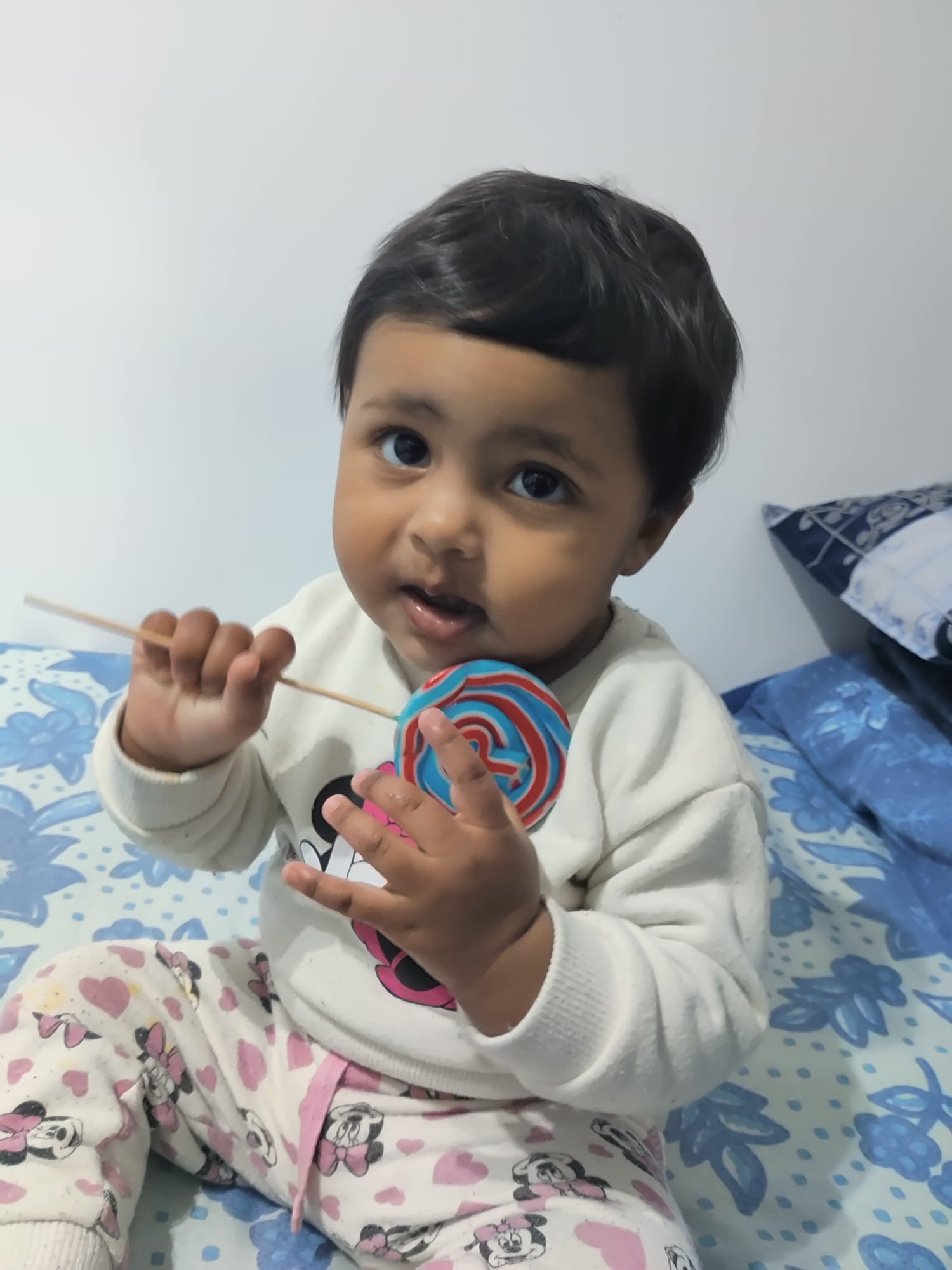
Did you know that 1 in 5 children in the United States experience a mental health disorder each year?
This shocking fact shows how crucial it is to focus on children’s mental well-being. We must make sure our young ones have the support they need to succeed.
By supporting their mental health, we help them develop good ways to deal with problems. They can also form strong bonds and reach their highest potential.
Key Takeaways
- Children’s mental health is a critical issue that affects a significant number of young people.
- Early intervention and support are crucial for promoting healthy mental development.
- Parents, caregivers, and educators play a vital role in fostering a supportive environment.
- Children’s mental well-being is closely linked to their overall well-being and quality of life.
- By prioritizing children’s mental health, we can help them build resilience and achieve their goals.
Understanding Children’s Mental Health

Early childhood mental health is key for a child’s future happiness. It covers many important areas for their growth.
What Constitutes Mental Health in Children
Children’s mental health includes emotional, social, and thinking skills.
Emotional, Social, and Cognitive Components
A child’s mental health is shaped by how they feel, interact, and think. These parts work together to help them stay mentally healthy.
- Emotional regulation: managing emotions and responding to situations appropriately.
- Social skills: interacting with others, forming relationships, and communicating effectively.
- Cognitive abilities: processing information, problem-solving, and learning.
Developmental Milestones in Mental Health
Reaching milestones is key for children’s mental health. These signs show how well they are doing.
The Developing Brain and Emotional Wellness
The growing brain is very important for kids’ emotional health. Knowing how it works helps us support their mental health.
Neurological Foundations of Mental Health
The brain’s growth affects kids’ mental health. It’s important to know how different things impact this growth.
Knowing when to help is crucial for kids’ mental health. Early help can greatly improve their mental health later on.
By understanding kids’ mental health and brain development, we can help them feel better and stay well.
The Importance of Mental Health in Children

Short-term Benefits of Good Mental Health
Good mental health in kids offers many short-term advantages. It boosts their learning and academic performance. It also helps them make healthy social connections and feel emotionally well.
Academic Performance and Learning
Children with good mental health do better in school. They stay focused, manage stress well, and tackle challenges head-on.
Social Relationships and Functioning
Good mental health also leads to better social interactions. Kids form positive bonds with friends and adults. This is vital for their emotional and social growth.
Long-term Impact on Adult Life
The benefits of good mental health in kids last a lifetime. It sets the stage for emotional wellness, career success, and happy relationships in adulthood.
Future Mental Health Outcomes
Healthy kids are less likely to face mental health problems as adults. They are more resilient and ready to face life’s ups and downs.
Career and Relationship Success
Good mental health in childhood also leads to better careers and relationships as adults. It helps people reach their full potential and live a fulfilling life.
By enhancing emotional wellness in children, we pave the way for a healthier, happier future. It’s a vital investment in their well-being.
Comparing Traditional vs. Modern Approaches to Children’s Mental Health
The shift from old to new ways of helping kids’ mental health shows we now get it better. Back then, we didn’t tackle kids’ mental health like we do now.
Historical Perspectives on Child Psychology
Child psychology has changed a lot over the years. At first, it was all about the unconscious mind and past experiences.
Behavioral vs. Psychoanalytic Methods
Old methods used either behavioral or psychoanalytic techniques. Behavioral methods changed actions by focusing on what you can see. Psychoanalytic methods looked into the unconscious and past to understand the mind.
- Behavioral techniques included positive reinforcement and desensitization.
- Psychoanalytic approaches involved play therapy and talk therapy.
Evolution of Treatment Approaches
As time went on, new research led to better treatments. Now, we use many methods that really work for each child.
Contemporary Understanding and Approaches
Today, we see kids’ mental health in a more complete way. We know it’s about family, school, and community too.
Evidence-Based Interventions
Now, we focus on methods backed by science. This includes CBT and family therapy, which really help kids.
Key components of contemporary approaches include:
- Personalized treatment plans.
- Family involvement in therapy.
- Integration with educational and community resources.
Holistic and Integrated Care Models
Today, we look at the whole child, not just their feelings. We work together to support kids fully.
By learning about the changes in helping kids’ mental health, we can do better. We can support their mental health in a way that really works.
Read more; https://theparentzy.com/understand-child-development-milestone/
Read more; https://theparentzy.com/the-science-behind-raising-emotionally-intelligent-children/
Key Components of Children’s Mental Well-being
It’s important to know what makes up children’s mental health. This includes many parts that help them deal with life’s ups and downs.
Emotional Regulation
Emotional regulation is key for kids’ mental health. It’s about knowing and controlling their feelings.
Identifying and Managing Feelings
Children should learn to spot and handle their emotions well. This can be done by emotional labeling and validation of their feelings.
Self-soothing Techniques
Teaching kids self-soothing methods, like deep breathing, helps them in tough times.
Social Skills Development
Social skills are crucial for kids’ mental health. They include empathy, understanding others, and solving conflicts.
Empathy and Perspective-taking
Helping kids understand and respect others’ feelings builds empathy. Role-playing and talks can help.
Conflict Resolution Abilities
Teaching kids to solve conflicts peacefully is key. Show them good examples and let them practice.
Cognitive Health Factors
Cognitive health, like problem-solving and resilience, is important for kids’ mental well-being.
Problem-solving Skills
Encouraging kids to think critically and solve problems helps them face challenges better.
Resilience and Adaptability
Building resilience and adaptability in kids helps them handle tough times. Positive feedback and small challenges can help.
Warning Signs of Mental Health Issues in Different Age Groups
It’s important to spot mental health warning signs in kids at different ages. Mental health issues show up in different ways at different times. So, it’s key for parents, caregivers, and teachers to know what to look for.
Toddlers and Preschoolers (Ages 2-5)
In young kids, mental health can show up in how they act and grow. Watching their behavior closely is crucial.
Behavioral Indicators
Some signs in toddlers and preschoolers include:
- Excessive tantrums or irritability
- Persistent aggression towards others
- Withdrawal or avoidance of social interactions
Developmental Red Flags
Red flags in this age may be:
- Delayed speech or language development
- Difficulty with potty training or other developmental milestones
- Regression in previously acquired skills
Elementary School Children (Ages 6-11)
Elementary school brings new challenges that can affect mental health. Kids face more academic pressure and social issues.
Academic and Social Challenges
Signs of mental health issues in this age include:
- Difficulty keeping up with schoolwork or a sudden decline in grades
- Struggling to make friends or being bullied
- Feeling isolated or left out
Emotional Expression Concerns
Children in this age may also show:
- Difficulty expressing their emotions or becoming easily upset
- Frequent mood swings or seeming overly anxious
- Having nightmares or trouble sleeping
Adolescents (Ages 12-17)
Adolescence is a key time for mental health. It’s a time of big emotional, social, and identity changes.
Mood and Behavior Changes
Warning signs in teens may include:
- Significant mood swings or persistent irritability
- Withdrawal from social activities or a sudden change in friend groups
- Decline in academic performance or loss of interest in previously enjoyed activities
Risk-taking Behaviors
Some teens may engage in:
- Experimenting with substances or risky behaviors
- Self-harm or expressing suicidal thoughts
- Engaging in reckless or impulsive behaviors
Spotting these warning signs is the first step to supporting kids’ mental health. Knowing the signs at different ages helps parents, caregivers, and teachers offer the right support.
Comparing Environmental Factors Affecting Children’s Mental Health
It’s important to know how different environments affect kids’ mental health. Their surroundings greatly influence their emotional well-being.
Home Environment
The home environment is key for kids’ mental health. It includes many factors that can help or hurt their emotional growth.
Family Dynamics and Stability
Family stability is very important. A loving and stable home environment helps kids feel secure and supports their mental health.
Parenting Styles and Their Impact
Parenting styles greatly affect kids’ mental health. Authoritative parenting, which is both warm and sets clear rules, is often best.
Dr. Laura Markham, a clinical psychologist, says, “When parents meet their children’s needs, kids learn to manage their emotions.”
“Emotional regulation is the ability to manage and modulate emotional responses to various situations.”
School Setting
The school environment is also crucial. It includes academic pressures, teacher support, and friendships.
Academic Pressure vs. Supportive Learning
Academic pressure can be good or bad. Too much stress can hurt mental health, but some can motivate.
| Aspect | High Academic Pressure | Supportive Learning Environment |
|---|---|---|
| Impact on Mental Health | Increased stress and anxiety | Promotes well-being and resilience |
| Learning Outcomes | Variable, often negative | Positive, fosters engagement |
Bullying and Peer Relationships
Bullying is a big problem in schools, affecting kids’ mental health a lot. Good friendships, on the other hand, can help and make kids feel better.
Community Influence
The community’s influence goes beyond family and school. It includes access to resources, cultural norms, and societal values.
Access to Resources and Support
Having access to mental health resources is crucial. It helps kids and families deal with challenges.
Cultural and Societal Expectations
Cultural and societal norms also affect kids’ mental health. It’s important to understand and respect these differences to support them well.
Looking at these factors shows we need a complete approach to help kids’ mental health. Each environment has its own role, and together they create a supportive space for kids to grow.
The Role of Parents vs. Educators in Supporting Mental Health
Parents and educators are key in helping kids with their mental health. They each have special ways to support a child’s well-being. Working together, they can greatly help a child grow.
Parental Responsibilities and Approaches
Parents are the first ones to care for a child and deeply affect their mental health. It’s important to create a loving home environment.
Creating Secure Attachment
Having a secure attachment is crucial for a child’s emotional growth. Responsive parenting makes kids feel safe and understood. Dr. Dan Siegel said, “The way we talk to our kids becomes the way they talk to themselves.”
Modeling Healthy Coping Skills
Children learn from what they see, so parents should show them how to handle stress and emotions well.
How Educators Can Foster Positive Mental Health
Educators also have a big role in helping kids’ mental health. They can make a supportive classroom environment that helps with emotional well-being.
Classroom Strategies for Emotional Support
Teachers can use strategies like mindfulness and social-emotional learning to support students’ emotional needs.
Identifying Students Who Need Help
Educators can spot kids who might be struggling with their mental health. Catching it early helps them get the help they need sooner.
Creating a Unified Support System
It’s important for parents and educators to work together to support kids’ mental health.
Parent-Teacher Communication
Keeping in touch regularly helps ensure kids get support at home and school.
Consistent Messaging About Mental Health
Being consistent in talking about mental health helps kids understand its importance. It also helps reduce the stigma around mental health issues.
Together, parents and educators can create a strong support system. This system helps kids with their mental health and supports their healthy growth.
Digital Age Challenges: Screen Time and Social Media Effects
Today’s children live in a world filled with digital technology. This affects their mental health in many ways. It’s important to know how screen time and social media impact their well-being.
Positive vs. Negative Impacts of Technology
Technology has both good and bad effects on kids’ mental health. It can help with learning and connecting with others. But too much screen time can cause problems like attention issues and feeling alone.
Educational Benefits vs. Attention Issues
Digital tools can make learning fun and easy to access. But, too much screen time can make kids less focused and more likely to get addicted.
Connection vs. Isolation
Social media lets kids connect with friends and family. But, it can also make them feel lonely and isolated if used too much.
Balancing Digital Engagement with Mental Wellness
To avoid the bad effects, finding a balance is key. This means spending time both online and offline.
Setting Healthy Boundaries
Parents and caregivers need to set limits on screen time. This helps kids stay active and interact face-to-face.
Using Technology to Enhance Mental Health
Technology can also help with mental health. Apps that teach mindfulness and stress management are great examples.
| Aspect | Positive Impact | Negative Impact |
|---|---|---|
| Educational Content | Enhances learning experiences | Can be distracting |
| Social Media | Facilitates connection | Can lead to isolation |
| Screen Time | Provides entertainment | Can lead to addiction |
Comparing Preventive Strategies for Mental Health Issues
It’s important to compare ways to prevent mental health problems in kids. This helps keep them happy and healthy. Parents, teachers, and caregivers can all help by using the right strategies.
Building Resilience in Children
Helping kids become resilient is key. It means teaching them to deal with tough times.
Growth Mindset Development
Teaching kids to believe they can grow their skills is vital. This mindset makes them eager to learn and face challenges.
Encouraging Healthy Risk-taking
Letting kids take smart risks builds their confidence. It’s a big part of helping them stay mentally strong.
Teaching Coping Mechanisms
Teaching kids how to handle stress is crucial. It helps them manage their feelings and deal with hard situations.
Mindfulness and Relaxation Techniques
Mindfulness, like deep breathing, can calm kids’ minds. Adding these to their daily life is helpful.
Emotional Vocabulary Building
Teaching kids to talk about their feelings is important. It helps them feel understood and reduces frustration.
Creating Supportive Environments
Creating a caring environment is key. This means having routines and talking openly.
Consistent Routines and Boundaries
Having set routines and rules makes kids feel safe. It helps them know what to expect and reduces worry.
Open Communication Channels
Talking openly with kids is vital. It lets them share their feelings and get the support they need.
| Preventive Strategy | Description | Benefits |
|---|---|---|
| Building Resilience | Helping children develop coping skills and a growth mindset | Enhances ability to handle stress and challenges |
| Teaching Coping Mechanisms | Mindfulness, relaxation techniques, and emotional vocabulary building | Reduces anxiety and improves emotional regulation |
| Creating Supportive Environments | Establishing consistent routines and open communication | Promotes a sense of security and stability |
Professional Help Options: Therapy vs. Counseling vs. Psychiatry
As a parent or caregiver, recognizing the need for professional help for your child’s mental health is crucial. Children’s mental health is complex. Knowing the different types of support available is key for making informed decisions.
When to Seek Professional Help
Knowing when to seek help is the first step. It’s important to recognize the signs that indicate your child might need professional support.
Recognizing Crisis Situations
If your child is experiencing severe emotional distress, such as intense anxiety, depression, or suicidal thoughts, seek immediate help. Crisis situations need urgent attention from mental health professionals.
Differentiating Normal Development from Concerns
Distinguishing between normal childhood behaviors and deeper mental health issues can be tough. If you’re concerned about your child’s emotional well-being or behavioral changes, talking to a professional can help clarify things.
Types of Mental Health Professionals for Children
There are various professionals who can support children’s mental health, each with different roles and expertise.
Therapists, Counselors, and Psychiatrists
Therapists and counselors offer therapy and counseling to help children manage their emotions and behaviors. Psychiatrists, being medical doctors, can also prescribe medication when necessary.
School-Based vs. Private Practice Support
Both school-based and private practice professionals are vital. School counselors offer support in the educational setting. Private practitioners provide more personalized therapy and counseling services.
What to Expect from Different Treatment Approaches
Understanding the various treatment options can help you make informed decisions about your child’s care.
Play Therapy vs. Cognitive Behavioral Therapy
Play therapy is often used with younger children, helping them express their feelings through play. Cognitive Behavioral Therapy (CBT) is a more structured approach, focusing on changing negative thought patterns and behaviors.
Medication Considerations and Monitoring
If medication is considered, it’s crucial to work closely with a psychiatrist to monitor its effects and adjust as necessary. Medication should always be part of a comprehensive treatment plan.
Enhancing emotional wellness in children involves a multifaceted approach, including professional help when needed. By understanding the options available and working with the right professionals, you can support your child’s mental health journey effectively.
Cultural Perspectives on Children’s Mental Health
How we help children with their mental health is shaped by culture. Each culture has its own way of understanding and supporting kids’ mental health. This variety is key to creating effective support for children from different backgrounds.
Comparing Western and Eastern Approaches
Western and Eastern cultures have different views on children’s mental health. Western societies stress personal growth and achievement. On the other hand, many Eastern cultures value family and community over individual success.
Individualistic vs. Collectivist Values
In individualistic cultures, kids are encouraged to grow and express themselves. In contrast, collectivist cultures focus on family and community. Both ways can help children’s mental health in their own ways.
Traditional Healing vs. Modern Psychology
Western cultures often use modern psychology and therapy. But, some Eastern cultures use traditional healing methods. It’s important to respect these differences to provide the right support.
Cultural Sensitivity in Mental Health Support
Being culturally sensitive is crucial for effective mental health support. It means respecting different family structures and using interventions that fit each culture.
Respecting Diverse Family Structures
Families are diverse in size and structure across cultures. It’s important to recognize and respect these differences to tailor support to each child’s needs.
Culturally Responsive Interventions
Interventions that fit the child’s culture are more likely to work. This means understanding the child’s cultural background and adapting support strategies to match it.
The Connection Between Physical and Mental Health in Children
Exploring children’s health shows us that physical and mental health are closely linked. A child’s health isn’t just about growing strong. It’s also about their mental and emotional health.
Nutrition and Mental Wellness
A child’s diet greatly affects their mental health. Eating foods rich in nutrients helps their brain grow and develop.
Brain-boosting Foods vs. Problematic Diets
Foods like salmon and berries are good for the brain. But, eating too much processed food and sugar can harm mental health.
Eating Patterns and Mood Regulation
Eating regularly keeps energy and mood stable. Skipping meals or eating too much sugar can make kids moody and irritable.
Physical Activity’s Impact on Mental Health
Being active is key for both body and mind. It can help lower anxiety and depression symptoms.
Exercise and Stress Reduction
Activities like running or swimming reduce stress. They release endorphins, which make us feel happy.
Team Sports vs. Individual Activities
Team sports and solo activities both have benefits. Team sports teach teamwork and social skills. Solo activities like yoga improve focus and discipline.
| Activity Type | Mental Health Benefits |
|---|---|
| Team Sports | Promotes social skills, teamwork, and communication |
| Individual Activities | Enhances personal discipline, focus, and stress relief |
Sleep Quality and Mental Functioning
Sleep is crucial for both body and mind. It helps with thinking and feeling emotions.
Sleep Hygiene Practices
Good sleep habits are important. This includes a regular bedtime, no screens before bed, and a comfy sleep space.
Managing Sleep Disruptions
Quickly fixing sleep problems is key. This can be through relaxation techniques or seeking professional help.
My Personal Approach to Supporting Children’s Mental Health
I’m passionate about helping young minds stay healthy. I’ve learned how to make a safe space for kids to feel good about themselves. This is key for their emotional health.
Strategies I’ve Found Effective
One thing that works is talking to kids every day. It’s about knowing how they feel and letting them share their thoughts.
Daily Check-ins and Emotional Temperature Readings
Checking in daily helps us see how kids are feeling. It’s a simple way to spot any problems early.
- Helps in building trust between the child and caregiver
- Encourages open communication about feelings and emotions
- Allows for timely intervention if needed
Creating Safe Spaces for Expression
It’s important to have a place where kids can share their feelings without fear. We can do this through fun activities.
Examples include:
- Art therapy sessions
- Storytelling and narrative therapy
- Play therapy
Resources I Recommend to Parents and Caregivers
I also suggest some tools for parents and caregivers. They help in supporting kids’ mental health.
Books and Tools from #BrandName
#BrandName has great books and tools for kids’ mental health. They give caregivers useful tips and advice.
Community Support Networks
Being part of a community support network is also helpful. It’s a place to share experiences and get advice from others.
The importance of community cannot be overstated; it provides a sense of belonging and support.
By using these strategies and resources, we can help kids stay mentally strong. This is good for their well-being and resilience.
Conclusion: Prioritizing Our Children’s Mental Well-being
Mental health awareness in kids is key in today’s world. It helps them grow emotionally and psychologically. By understanding this, we can support their mental health better.
We’ve looked at how kids’ brains develop and how the environment affects them. We’ve also seen how parents, teachers, and mental health experts play a part. They all help kids stay mentally healthy.
By focusing on kids’ mental health, we can help them succeed. I urge everyone to learn more about it. Let’s also push for resources that help kids stay well.
Together, we can help our children become happy, healthy adults. Let’s make a positive change in their lives.
FAQ
What are the key components of children’s mental well-being?
Children’s mental well-being includes emotional control, social skills, and thinking health. These are key for their mental health and emotional well-being.
How can parents support their child’s mental health?
Parents can help by building a safe bond, showing good ways to handle feelings, and knowing when their child might need help. They should also talk openly about mental health and offer support.
What is the importance of early childhood mental health?
Early mental health is vital for a child’s future well-being. It helps with emotional health, social skills, and thinking abilities. These are important for addressing children’s mental health needs.
How can educators foster positive mental health in the classroom?
Teachers can support mental health by using emotional support strategies, spotting students who need help, and making a supportive classroom. They should also teach about mental health and offer resources for managing feelings and building resilience.
What are some preventive strategies for mental health issues in children?
Preventive strategies include building resilience, teaching coping skills, and creating supportive places. These help promote mental health and lower the risk of problems.
How can parents and educators work together to support children’s mental health?
Parents and teachers can support mental health by talking openly, knowing the signs of issues, and offering a united support. They should also raise awareness and provide resources for managing emotions and building resilience.
What are some effective ways to promote mental health awareness in kids?
Ways to promote awareness include teaching emotional words, encouraging healthy risks, and giving chances for social skills. Parents and teachers should also show healthy behaviors and create a supportive environment for emotional wellness.





Pingback: Autism spectrum disorder: symptoms and causes - Theparentzy.com
Pingback: How to manage child behaviour - Theparentzy.com
Pingback: Type of child Abuse - Theparentzy.com
Pingback: How to Help a Child With Speech Delay at Home - Theparentzy.com
Pingback: What Should Eat Child at 1 to 3 Year Old? - Theparentzy.com